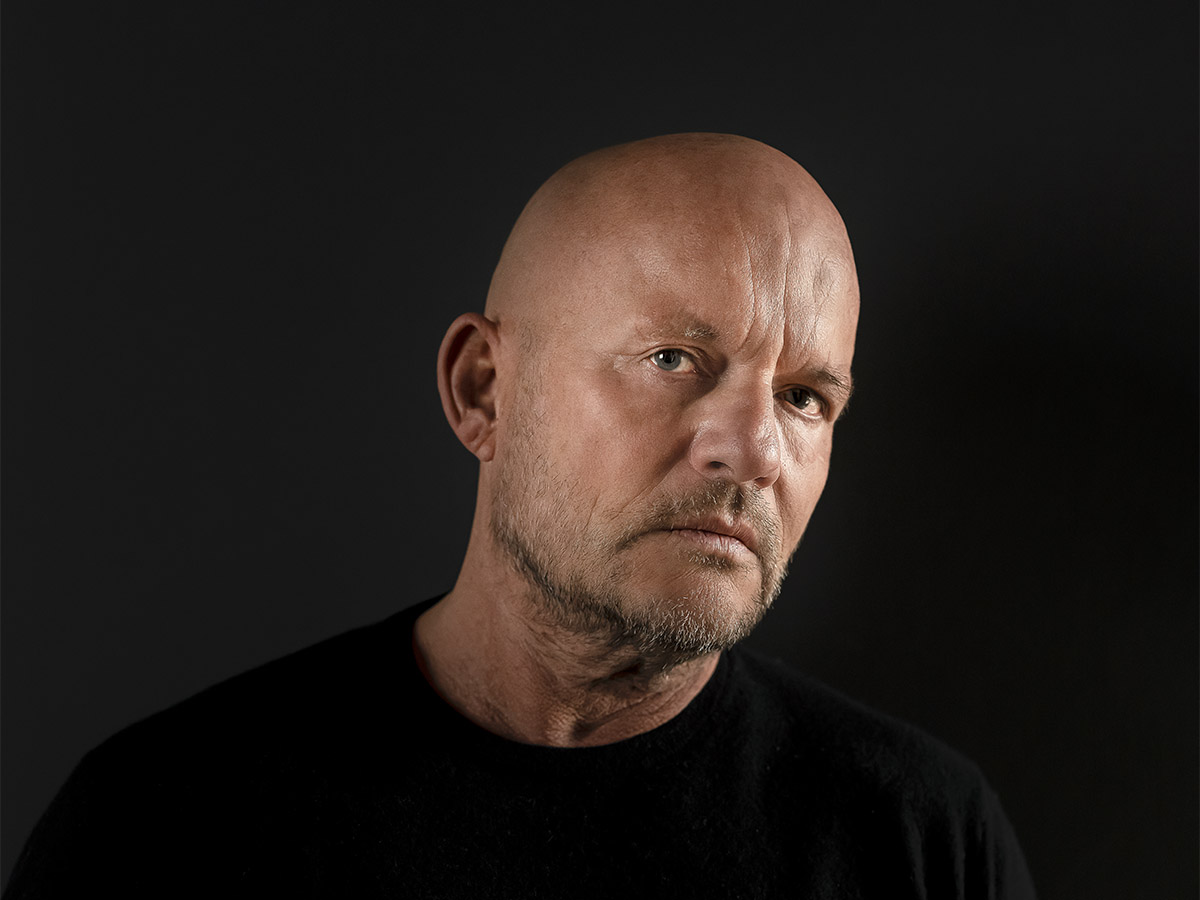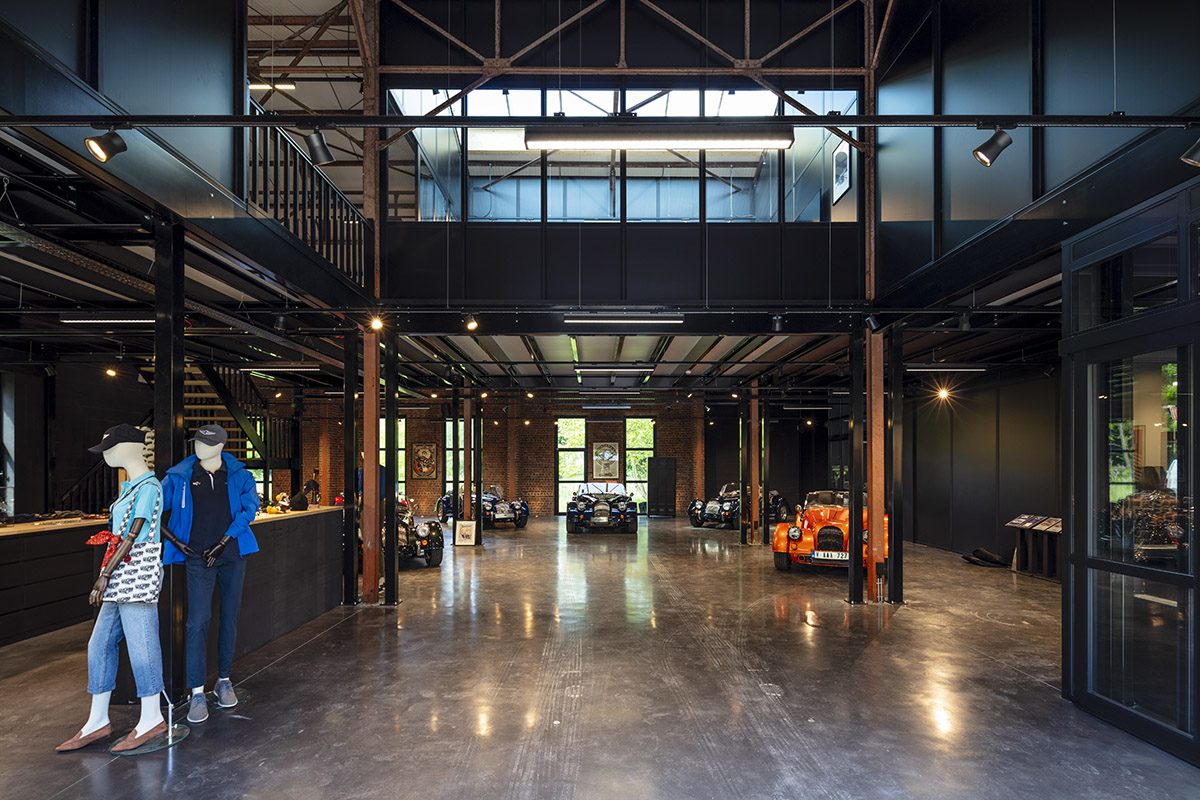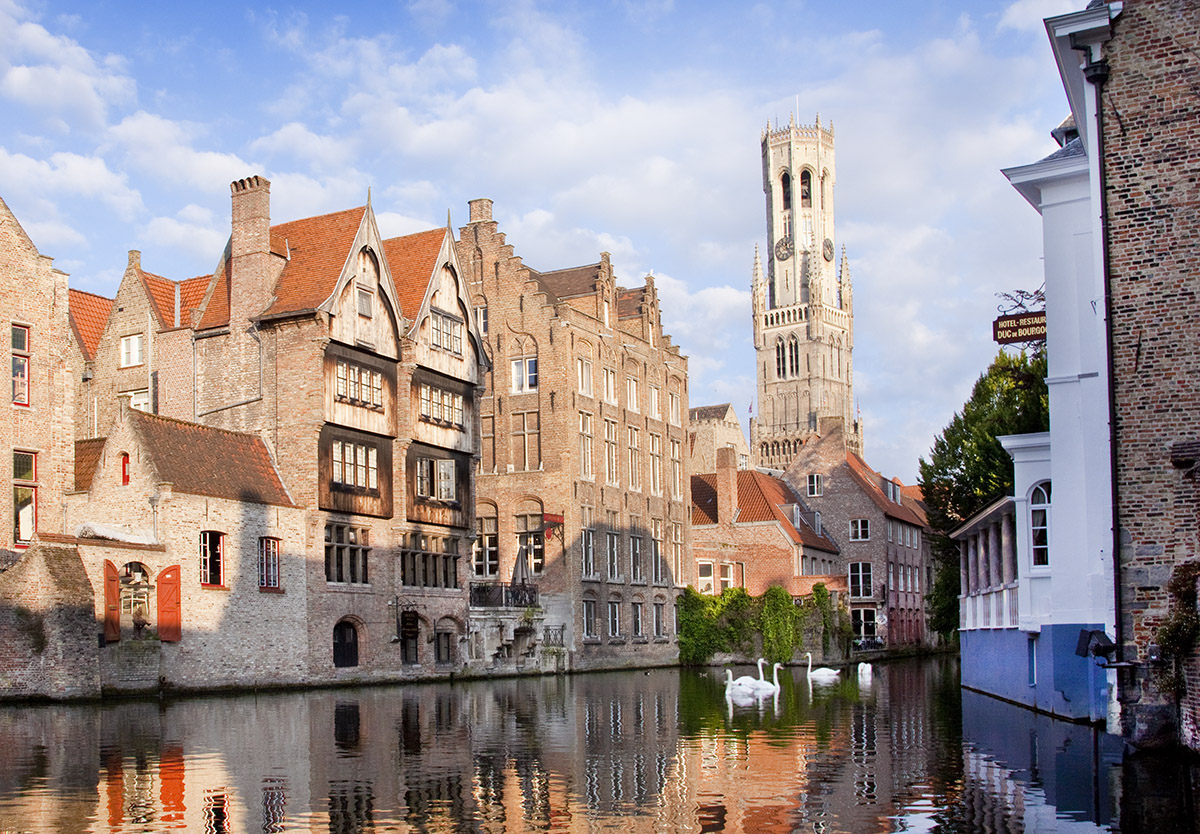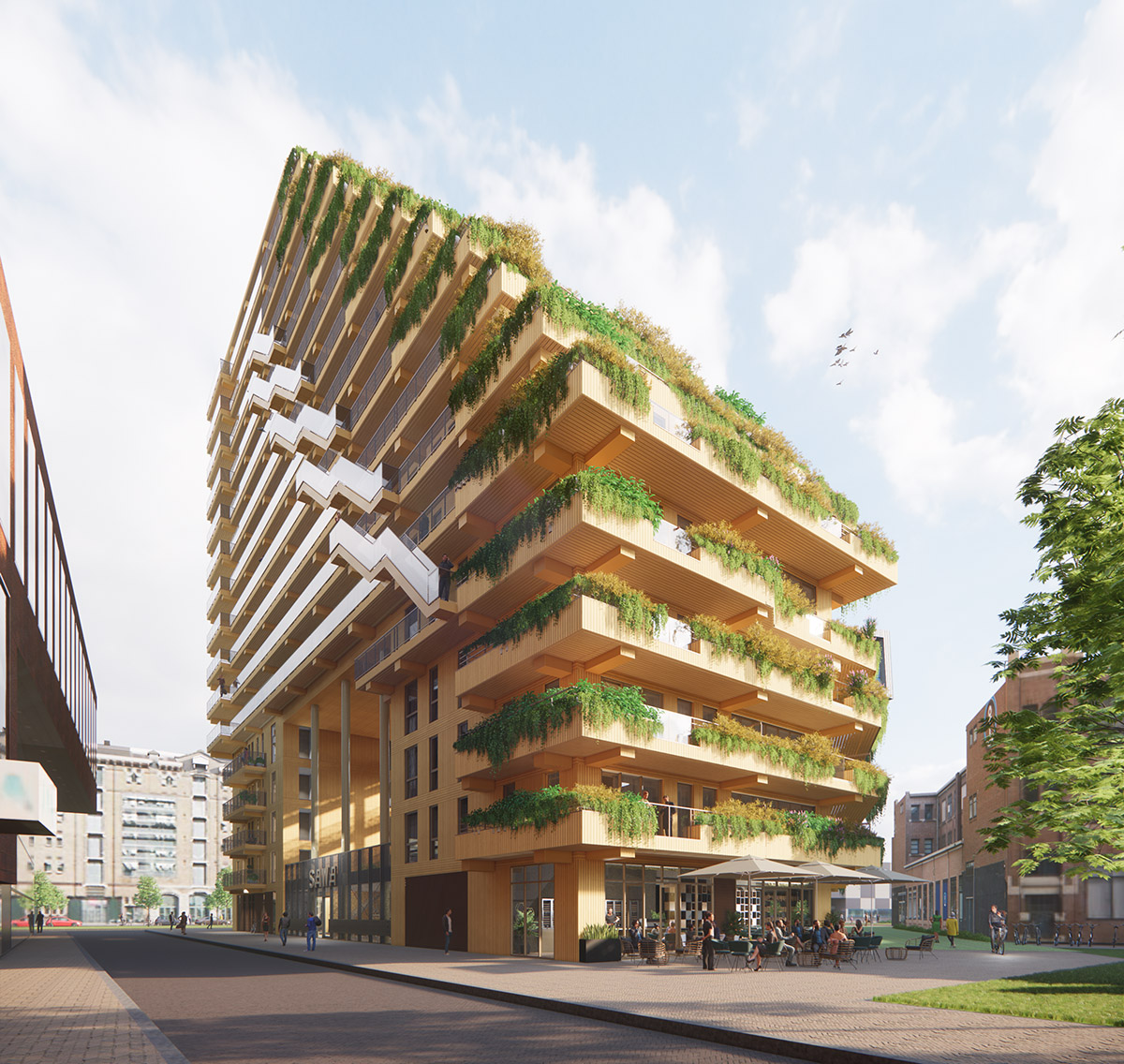Dial Architects: Alluring architecture
Text: Bas Van Duren | Photos: Dial Architects
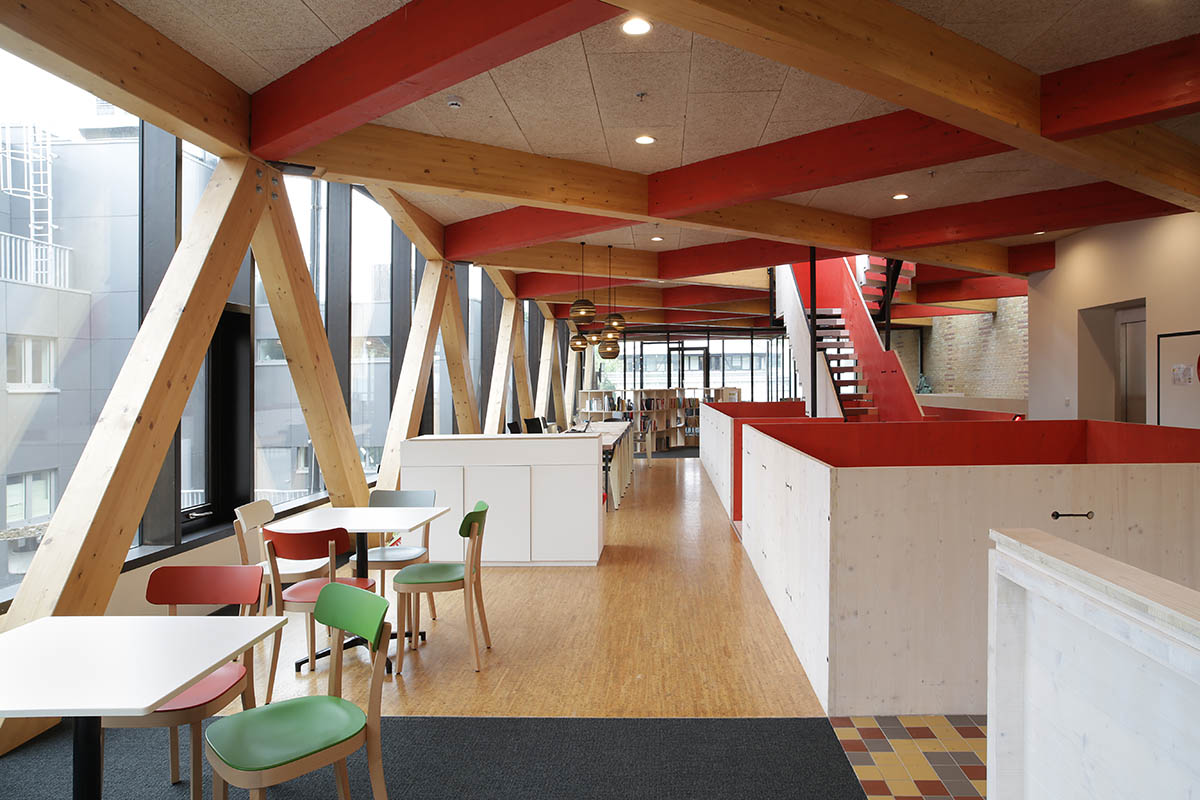
Art Center Vooruit, Offices.
Whether it’s dealing with renovations full of heart and soul or co-creative designs for the social and artistic fields, or even the development of complex buildings in public spaces: Belgian architecture team Dial Architects can do it all. Headed by Geert Pauwels, Dial has been a mainstay in the Belgian architectural scene since the late ‘90s and is known for its quirky and timeless style that treats tradition with respect while being bold enough to expand existing spaces and heritage. Dial’s way of working doesn’t impede a holistic approach and often opts for as much green as possible.
Duality
Growing up in a small village close to Ghent, architect Geert Pauwels had a deep love and understanding for his surroundings filled with parks, ponds and rural buildings like farms and sheds. He learned the tools of the architecture trade at the university of Leuven, formerly known as St Lucas, school of architecture, situated in Ghent, and he studied even further in Vienna at the ‘Akademie der Bildendern Kunste’. “An amazing place to gawk at all the wonderful architecture of Otto Wagner, Joze Plecnik and Adolf Loos,” Pauwels recalls. It all laid the groundwork for Dial Architects, operating in a 18th-century parsonage in the village of Zwalm, half-an-hour’s drive from Ghent. An ideal situation, according to Pauwels: “It forces our team to look at the busy city life from a place of tranquility and that’s the kind of duality that I enjoy a lot.”
That duality is a recurring theme for Dial Architects (named such because back when Dial started, ‘communication’ was key and the widespread team relied on phones for most of theirs). Their scope can be both narrow and wide, dealing on a zoomed-in level with furniture, but on a grander scale Dial works with landscaping and the urbanisation that hasn’t fully reached the Flemish Ardennes just yet. Pauwels: “We try to enrich both areas, making it enticing for city people to enjoy the countryside and vice versa. In everything we do, we always go for the bigger picture.”
Renovating and restoring
Pauwels is fond of what he calls ‘Typological shapes’; the aforementioned rudimentary kind of rural buildings that have an everlasting quality. He explains: “I was growing up in a building that used to be a farm and after waves of modernism and post-modernism, the essence of what a building should be is what really stuck with me. I can lose myself in details, jetties and frames and use a lot of that in what we do with Dial. We thoroughly enjoy giving new life to existing buildings that are part of a place’s cultural heritage. It’s a balancing act between renovating and restoring that requires a lot of input from our specialists and a feeling for getting to know a building better and how it can fill the needs of its users.”

Vooruit
One of Dial’s best examples of this would be Ghent’s centre of arts, ‘Vooruit’ (the Dutch word for ‘forward’). Designed by Ferdinand Dierkens and built between 1911 and 1913, Vooruit was the idea of local socialists who wanted to protect factory workers from the lability of big capital by providing affordable food, drink and cultural entertainment. The mere mention of Vooruit’s name fills Pauwels with unbridled joy. “It’s a fantastic piece of work; eclectic art nouveau with a complex structure and its bourgeoistic façade, keen brickwork and ‘pamphlettair’ nature just draws you in. As a centre of arts, its been in use for several decades but didn’t quite meet modern standards. We revamped the whole building with its complexity in mind, letting much more sunlight in, creating more outside spaces and adding green wherever possible using a sparse palette to enrich every facet. What was once a beacon of enlightenment is now a beacon of actualising historical buildings.”
The work Dial did on Vooruit netted them the prestigious Belgian Building Awards and it’s the crowning of the effort Pauwels and his team put into it. Pauwels: “It’s rewarding to see how fruitful our way of working is, as we use rhythm in our architecture that’s built out of understandable components, use of regenerative materials and use of light. I think it’s important to be affordable and we have a social obligation to make alluring public spaces like Vooruit, but also the likes of the Kortrijk music centre and Nieuwpoort theatre in Ghent. Doing more with less, I think that’s the architectural way forward.”

Web: www.dial-architects.be
Book: Vooruit: Icon & Future Imprint of MER.Borgerhoff & Lamberigts
Subscribe to Our Newsletter
Receive our monthly newsletter by email
